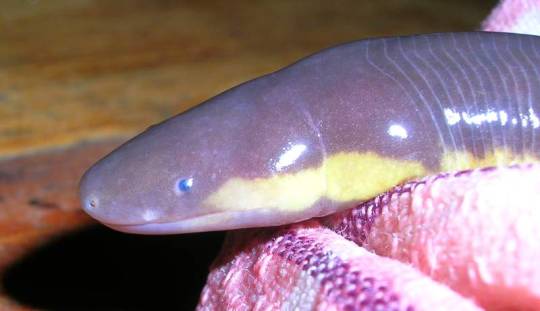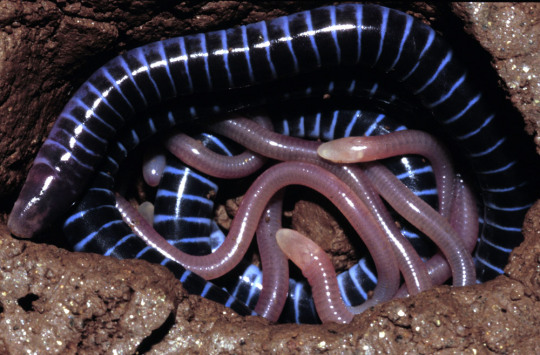


Whether caecilians lay eggs or give birth to babies, they are some of the most devoted mothers in the animal kingdom. Once thought to simply abandon their eggs (as that is the norm for most amphibians), it has now been proved that female caecilians will stay with and guard their nests, even remaining with the babies for up to six weeks after they have hatched. But the really amazing thing is how mother caecilians feed their young.
The unborn babies of live-bearing caecilians develop special teeth while still in the womb, and nourish themselves by using those teeth to scrape off and consume the cells lining their mother?s oviducts. Several species of egg-laying caecilians, on the other hand, demonstrate a unique behaviour known as ?maternal dermatotrphy?. The mother?s skin cells grow larger and contain more fat, and her brood uses specialised teeth (some blunt scrapers and others sharp hooks) to
peel off this skin and devour it. The female caecilian will regrow this skin every three days so that her young can continue to feed. Not to worry, though; this outer layer of skin is dead, so having it chewed off doesn?t hurt the mother.